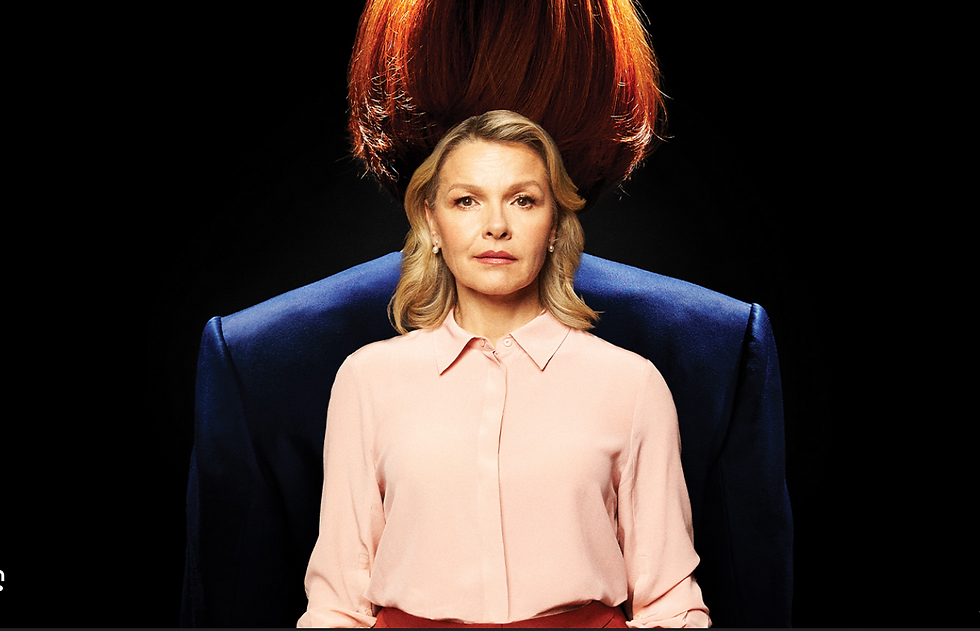1984: A Mirror in Concrete and Light
- The Silver Moth

- Jul 8
- 4 min read
Some performances don’t leave you. They haunt you. Not like a ghost—but like a shadow that grows longer the more you stare into the world around you.
On Sunday afternoon, I stepped into the final performance of 1984 at the opulent, Spanish Renaissance–inspired Comedy Theatre in Melbourne. I walked out electrified by the beauty surrounding me—and silenced by the visual brutality I’d just witnessed. Not because I had nothing to say, but because I suddenly understood too much. And maybe that’s the most dangerous thing in a world ruled by suppression: is to understand.
As an artist—and someone who walks the thin line between forensic logic and raw emotional storytelling—Orwell’s 1984 has always sat on my bookshelf like an altar. For me, it’s not entertainment. It’s instruction. A blueprint of collapse dressed in fiction, disguised as history. Yes, it’s bleak, as a fellow artist reminded me while I sipped scotch and scratched notes for this review. But truth often is. And if you're someone who sees systems—really sees them—then 1984 isn’t a warning. It’s recognition.
Shake & Stir Theatre Company’s production didn’t just retell the story. It embodied it. It translated the icy grey tone of Orwell’s language into concrete walls, blinding searchlights, cracked static and visceral sound. It was an art installation in motion—each scene another layer of surveillance and silence smeared across a colossal wall of flickering screens. Craig Wilkinson’s video design was masterful, not just as a tool for narrative but as intrusion. We, the audience, were also being watched.
From the opening moments, we’re dropped into a world where reality isn’t just distorted—it’s rewritten. Michael Whalley’s portrayal of Winston Smith was beautifully broken. He gave us not the hero of a rebellion, but the last flickering thought in a world determined to stamp out thinking. His chemistry with Chloe Bayliss (Julia) was arresting not for its romance, but its danger—every kiss a crime, every whisper an act of war.
There’s a scene where Winston’s internal monologue plays across a massive screen, a close-up of his eyes, trembling with doubt. The theatre fell silent. In that moment, we weren’t just watching a man unravel. We were watching ourselves reflected back. What are we still allowed to feel? To believe? To remember?
As an artist, I was moved by the detail. The way lighting didn’t just illuminate, it interrogated. The way sound didn’t underscore, it infiltrated. The way the space was used to reinforce the crushing scale of The Party. This wasn’t just a play. It was oppression choreographed. And at times, it made you complicit.
But the moment that truly unravels the soul—and the audience—is Room 101.

Room 101 isn’t just a place. It’s a concept. A psychological scalpel. A state-sanctioned crucible where your deepest fear becomes your captor, and your love becomes your betrayal. In Shake & Stir’s 1984, this moment was executed with such sensory precision that it no longer felt like theatre—it felt like a mirror turned inward. Because Room 101 isn’t about rats or cages or blood. It’s about the thing that breaks you. It’s the moment where control stops being external and becomes internalised. When you start doing the work of your oppressor—to yourself.
In art, we speak often of vulnerability. Of shedding layers. But Room 101 strips you of self. It’s where you learn just how easily love can be weaponised, how even truth can be bartered if you’re afraid enough. It is the ultimate reminder that authoritarianism doesn’t just want your obedience—it wants your soul.
And that… that’s where Orwell stops being fiction.The horror of 1984 is not just the boot on the neck. It’s the smile while it happens. The doublethink. The ability to betray someone while still calling it love. It is gaslighting turned into government. And what hit me most was how uncomfortably now it all felt.
We’re living in a time where history is being rewritten in real time. Where language is weaponised. Where resistance is repackaged as instability. Where truth is slowly dissolved in algorithmic white noise.
And if that isn’t enough I look up to see two large Public Order Police Response trucks outside. Big, black, authoritarian. The kind that hum with unspoken threat. And there it was: the alignment. The world I’d just witnessed on stage... parked on the curb in front of me. Reality reflected back in real time. And no one around me even blinked.
And yet, we still call it peace.
I didn’t just see a play that night. I saw a portrait of power, painted in shadow and static. I saw what happens when control stops looking like war and starts looking like routine. Like safety. Like protection.
Shake & Stir’s 1984 is more than a production. It is a prophecy we’ve already walked into. But perhaps, in staging it, in watching it, in recognising it—we might still find the cracks in the wall.
And for artists like me, those cracks are where the light gets back in.







Comments